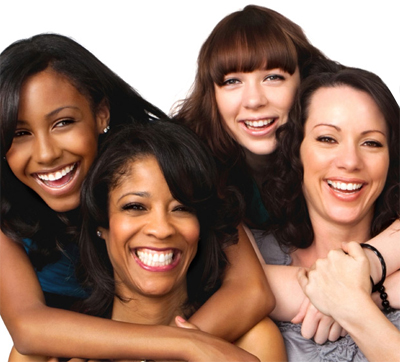How do you keep women from becoming too dependent on the advocate?
For those individuals who are prone to becoming overly dependent on others, such dependency is minimized by the short time frame (10 weeks) of the intervention, and the clearly delineated Completion date. It is important to note, however, that this  question typically arises from individuals who view women with abusive partners as “not like me.” We all depend on informal or formal advocacy-type assistance at various times in our lives (whether in the form of family helping us gain employment, friends accompanying us to the doctor, colleagues sharing information about opportunities or commodities, etc.). The more disenfranchised that individuals are from society, the fewer networks they have to rely on for such assistance. This advocacy model is predicated on the belief that we could all use more information about resources and how to obtain them, and that we can all use a supportive person in our lives through difficult times.
question typically arises from individuals who view women with abusive partners as “not like me.” We all depend on informal or formal advocacy-type assistance at various times in our lives (whether in the form of family helping us gain employment, friends accompanying us to the doctor, colleagues sharing information about opportunities or commodities, etc.). The more disenfranchised that individuals are from society, the fewer networks they have to rely on for such assistance. This advocacy model is predicated on the belief that we could all use more information about resources and how to obtain them, and that we can all use a supportive person in our lives through difficult times.
We don’t have a university in our area. Would this type of advocacy project work using volunteers instead of students?
An important next step in exploring the usefulness and generalizability of this intervention is to investigate whether volunteers would advocate for women as effectively as university students. One reason college students are preferable to volunteers is that they are paying for the experience (through tuition) and earning a grade and potential letter of recommendation for their efforts. This maximizes the likelihood of their working the required hours each week and making this intervention a priority in their lives. It is only natural that when busy individuals have to prioritize their time, it is their volunteer work that usually gets the short shift. A major concern in using volunteers as advocates is that they may be more likely to quit mid-way through the intervention or to put in fewer hours or less effort than is necessary to be effective. On the other hand, volunteers are quite capable of becoming excellent advocates, and with appropriate training and supervision (ideally from a paid staff member), could do as well if not better than university students. Another advantage of using volunteers is that they may likely come from more diverse backgrounds than typical university students. The majority of our students were white, under 24 years of age, and had never been mothers. While they clearly did an excellent job and generally bonded well with the women with whom they worked, one could imagine that older advocates with more life experiences could potentially do even better. Domestic violence service programs might consider aligning with religious/spiritual groups, community organizations, or other volunteer programs to obtain a paraprofessional advocacy workforce conducive to their individual needs.
Shouldn’t an intended goal of the project be to help women leave the relationship?
It cannot be overemphasized that an integral component of this model is to follow the woman’s lead in determining goals. Encouraging a woman to make certain choices over others is not only disrespectful, but is also likely to fail in creating lasting change. Individuals have multiple and complex reasons for making life choices, including relationship decisions. Ending the relationship not only does not necessarily end the violence, it sometimes escalates the violence (Jones 1994; Mahoney 1991). The advocate’s role must be to help women do what they can to protect themselves and their children, regardless of whether women are in or out of the relationship. Advocates can offer information to help women make decisions, but they should never push a woman toward one path over another. Working from a strengths perspective involves viewing individuals as naturally competent and capable, possessing valuable skills and abilities to make decisions and create positive change in their own lives.
Had we assumed in our research that leaving the relationship should be a desired outcome for all women, we would have analyzed whether women who worked with advocates were more effective in leaving the relationship than were women in the control group. This analysis would have indicated no differences between the two groups. However, when we looked at group differences only for women reporting they wanted to end the relationship, the significant difference emerged. Women who worked with advocates were more effective in ending the relationship when they wanted to than were women in the control condition (96% vs 87%).
If a major goal of the advocacy intervention is to help women become safe, why not just focus on legal advocacy?
Interestingly, only 72% of the women worked on legal advocacy issues during their intervention, and not all of those issues pertained to the assailant. Some women, for example, were fighting their landlords in court or had been charged with other crimes themselves. Although the individual interventions have not yet been examined in sufficient detail to state confidently what worked to help women become safer over time, it appears there were multiple pathways through which this occurred. One woman, for example, knew if she could end the relationship and move to another state it would be extremely difficult for her assailant to follow her. Her main obstacle? Divorcing the assailant would result in her losing her medical benefits, and she suffered severe epileptic attacks. Without letting her husband know she was even working with the Community Advocacy Project, she and her advocate checked into her options and not only obtained affordable health insurance but convinced a local church to pay her bus fare to a new location. Was this easy? No. But with determination and hard work it was accomplished within the 10 weeks. This particular woman was not abused again across the followup time periods, yet she never involved the criminal justice system.
Legal advocacy programs are important and necessary resources for women choosing to use the court system. However, many women choose alternatives to the criminal justice system to keep themselves and their children safe. The more generalized our advocacy efforts can be, the more lives we can effectively touch.
Latest News

CAP Disseminated in Monterrey, Mexico
With funding provided by the United States Agency for International …Read More »
Examining the Impact of Mobile Advocacy and Flexible Funding on Domestic Violence Survivors’ Housing Stability and Well-being
Dr. Cris Sullivan, who originally developed the Community Advocacy Project …Read More »
Developed by:
Director, MSU Research Consortium on Gender-based Violence
Professor, Ecological/Community Psychology
Michigan State University


